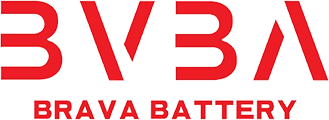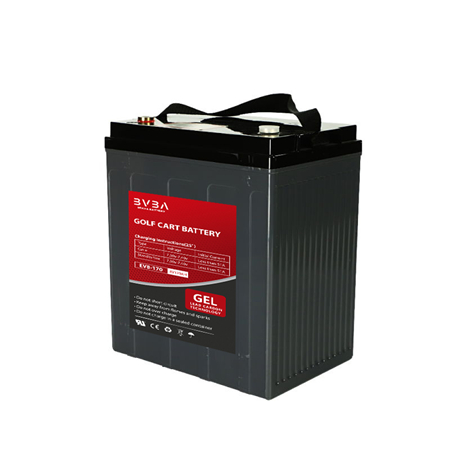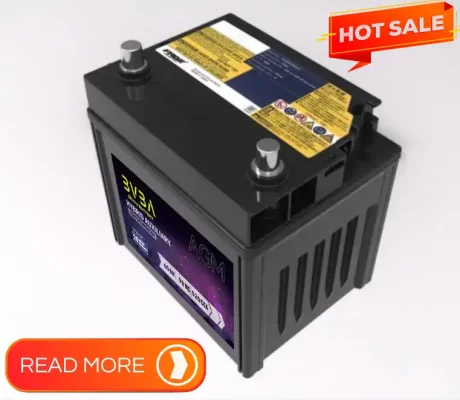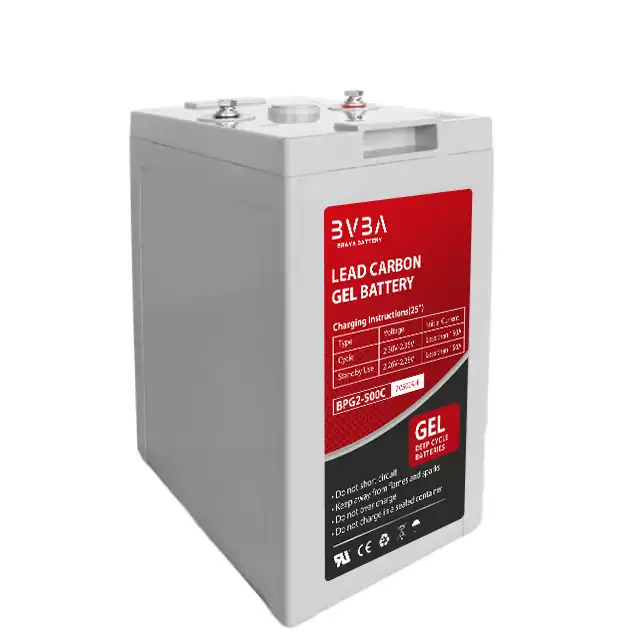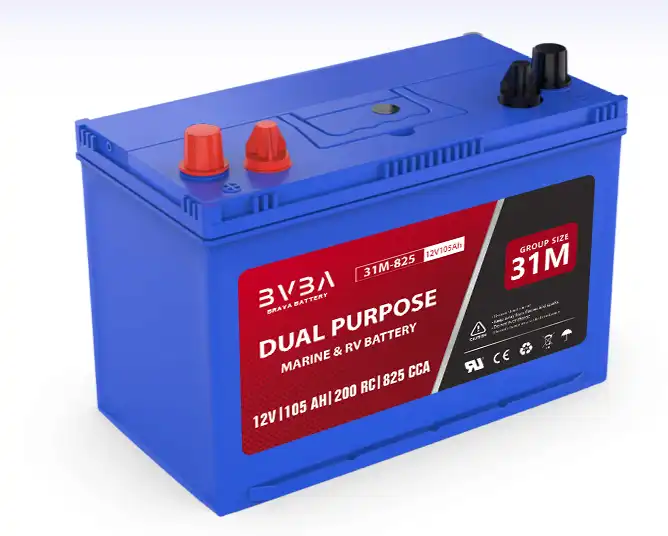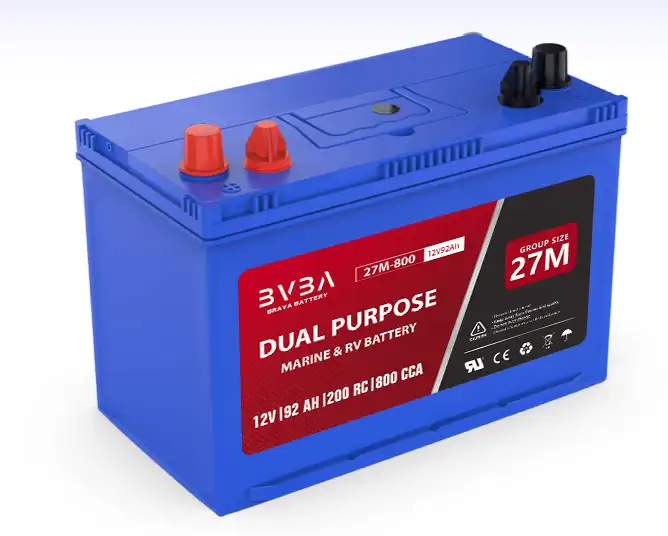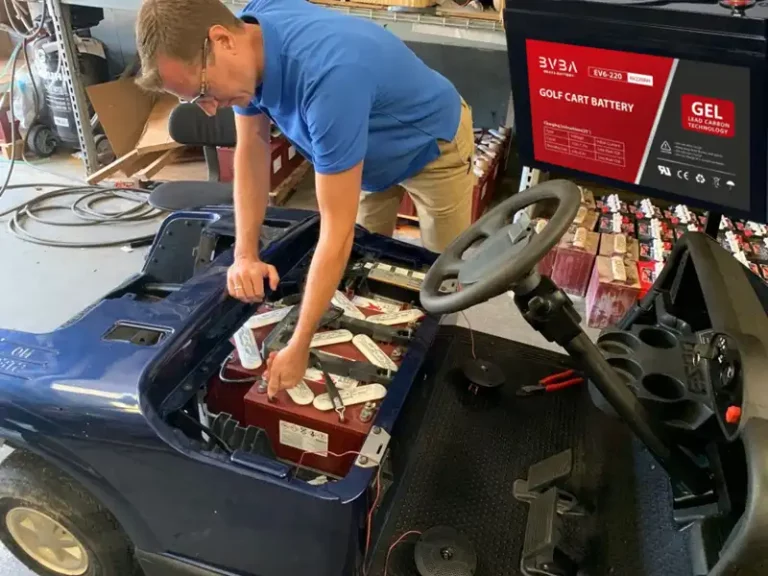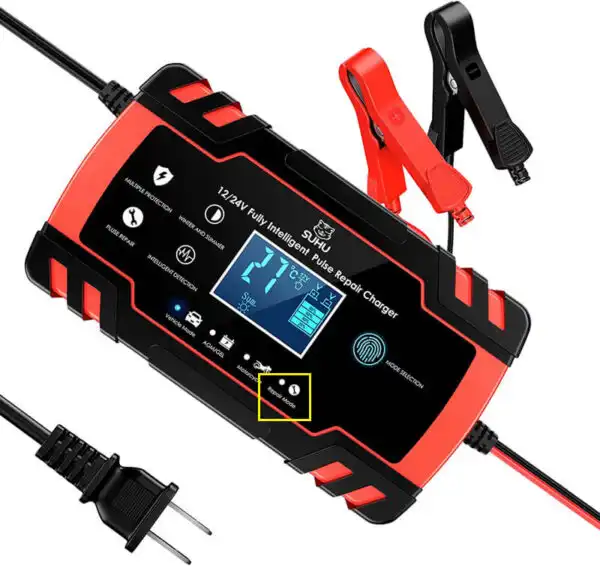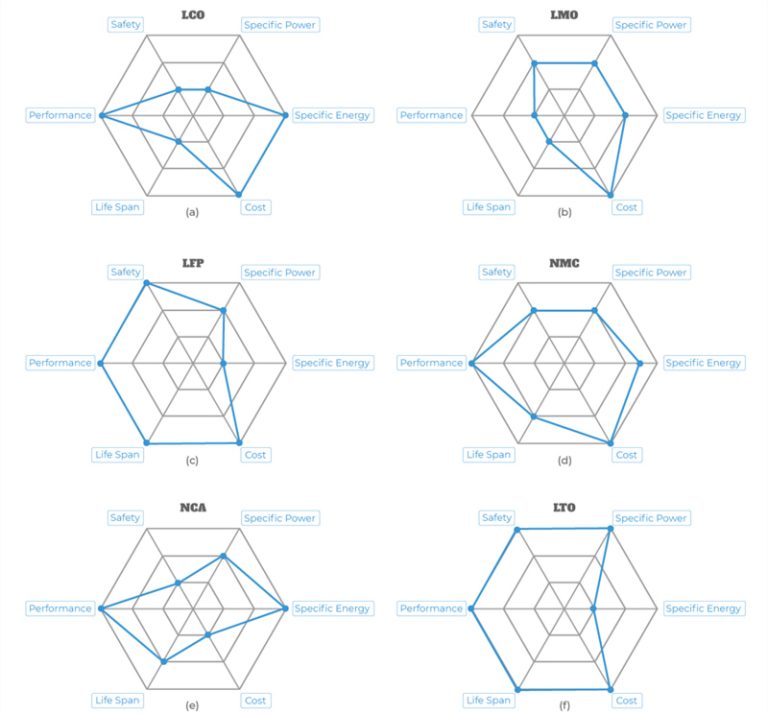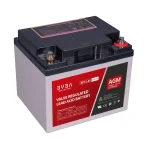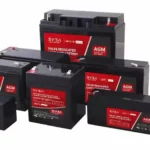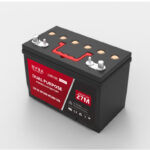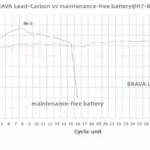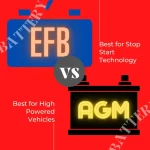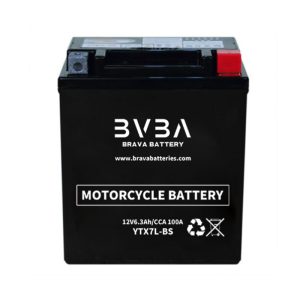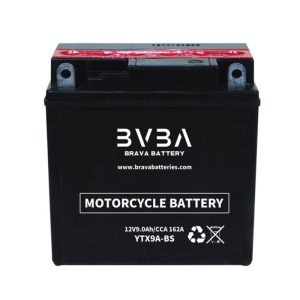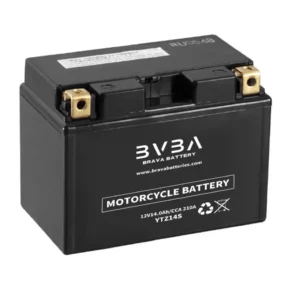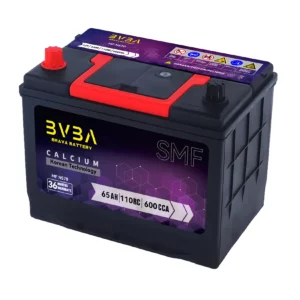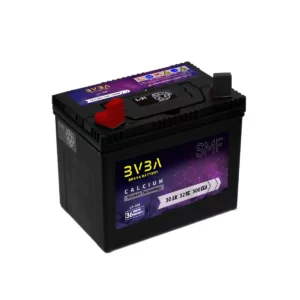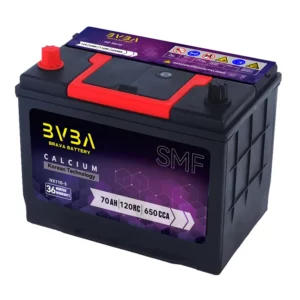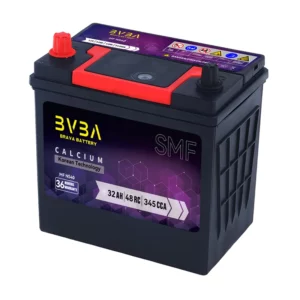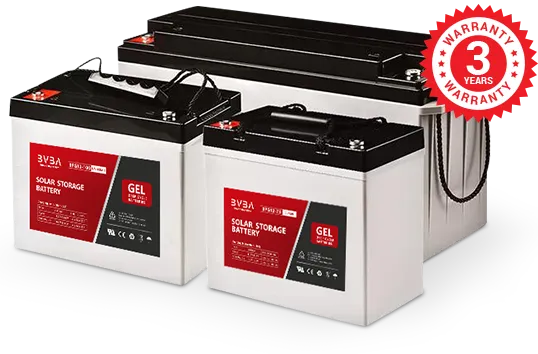What are SLA, AGM and VRLA batteries?
Sealed Lead Acid (SLA) and Valve Regulated Lead Acid (VRLA batteries) are two different abbreviations for the same cell. Absorbed Glass Mat (AGM) is a form of SLA/VRLA in which the electrolytes are soaked into dividers across plates made out of sponge-like thin glass fibre matting.
To accomplish “recombinant” functionality, a VRLA cell uses a one-way pressure-relief valve mechanism. This implies that the negatively charged plate absorbs the oxygen that would typically be created on the positive electrode. Instead, water (H2O) is created, which keeps the cell hydrated.
There are 4 different types of sealed lead acid batteries, each with a specific set of features:
1. General Purpose 2. Deep Cycle 3. Gel 4. High-Rate UPS The General Purpose battery is the most versatile of the four and is reliable for backup or cycling. They are used in such household mechanisms as sump pumps, fire and security systems, UPS battery backups and riding toys. Starter batteries for automotive use are considered general purpose, too. They provide the initial power needed to start the engine, and are then recharged during driving. They can’t deep cycle, so are not useful for applications requiring reliable longer term power.
What’s An SLA Battery?
SLA stands for Sealed Lead Acid battery. It’s also called the VRLA battery, which is short for Valve Regulated Lead Acid battery.
Sealed lead acid and valve regulated batteries are subsets of the lead acid battery, which is more commonly found in flooded form (known as flooded lead acid, or FLA).
Like flooded batteries, the sealed lead acid battery is a rechargeable battery. The key difference is that they’re sealed with electrolyte that isn’t free-flowing — introducing a host of benefits.
In a sealed battery, the hydrogen gas produced by the chemical reaction during charging cycles is reabsorbed into the electrolyte. A safety vent prevents excessive pressure buildup of the gases.
This allows the sealed battery to eliminate regular top-ups of distilled water as it experiences minimal electrolyte loss (unlike a flooded lead acid battery). However, it requires more stringent charging controls to keep hydrogen production in check.
Let’s now look at the different sealed lead acid battery types.
What are the benefits of using an AGM battery?
AGM batteries are maintenance-free, have high electrical dependability, and are smaller than saturated lead-acid batteries. It has a negative self and can withstand cold conditions. The capability to deep cycles and a recharge that is five times quicker than the inundated version are the two biggest benefits.
What Are The Different Types Of Vehicle SLA Batteries?
You’ll usually find two types of SLA battery technology — the AGM battery and Gel Cell battery. Both these technologies are used in deep cycle and SLI (Starting, Lighting, Ignition) applications.
Let’s look at the battery technology first:
A. The AGM And Gel Cell Battery
The differences between the AGM battery type and gel cell mainly has to do with how the battery electrolyte is stored:
- AGM Battery: AGM is short for Absorbed Glass Mat. In the AGM battery, the electrolyte is absorbed into fiberglass mat separators between the battery plates.
- Gel Cell Battery: In gel batteries, the electrolyte is suspended in a silica gel. This allows electrons to flow between the battery plates but not leak out.
Both AGM and gel cell batteries are sensitive to overcharging, but gel batteries are more susceptible as overcharging can irreparably damage the gel. This makes gel batteries less suited to automotive use compared to the AGM battery.
Now, let’s go over the two ways they’re applied:
B. The Deep Cycle And SLI Battery
The main difference between a deep cycle battery and an SLI battery lies in the thickness of the internal lead plates and density of the active material:
- Deep cycle batteries have thicker plates, designed to be charged and recharged repeatedly. They generate sustained battery power for extended periods and are typically used in marine vehicles, RVs or golf carts.
- SLI batteries are starter batteries, providing a rapid burst of power to start an internal combustion engine.
There are sealed lead acid batteries designed to handle both deep cycle and starter battery functions, called “Dual Purpose” batteries.
Also, note that deep cycle and starter batteries aren’t limited to sealed lead acid batteries either.
The most common starter battery is the flooded lead acid battery.
Now that you know the types of SLA batteries out there, should you use one?
What Are The Benefits Of Using An SLA Battery In Your Car?
A sealed lead acid battery offers several advantages like:
- It’s maintenance-free: there’s no need to top-up the electrolyte solution
- It’s leak-proof: you won’t have to worry about electrolyte spillage
- It’s position insensitive: you can place it in any position, unlike the traditional flooded lead acid battery, which must always be upright
- It has a low self-discharge rate: this results in better charge retention
- It’s easier to ship: they are classified as non-hazardous, compared to the flooded lead acid battery (which is shipped separately from the sulfuric acid)
Now that we’ve covered the basics of the SLA battery, let’s go over some FAQs.
10 SLA Battery FAQs
Here are some common sealed lead acid battery questions and their answers:
1. What’s A Flooded Lead Acid Battery?
The flooded lead acid battery (FLA) is a subset of lead acid batteries.
It’s also known as a wet cell battery.
In FLAs, lead plates are suspended in an electrolyte solution of sulfuric acid and water. The FLA battery needs a regular top-up of distilled water to replenish its electrolyte levels (which drops with the chemical reaction), so it’s not a maintenance-free battery.
2. How Long Do SLA Batteries Last?
In general, the sealed lead acid battery can last anywhere between 300-1200 cycles, depending on the type. A well-maintained gel or AGM battery can average 7 years of use.
In practice, it depends on what the battery is used for, its operating temperatures, discharge cycle count and charging method.
3. What’s The Shelf Life Of An SLA Battery?
The sealed lead acid battery has a low self-discharge rate, typically about 3.3% per month. You can store it for up to 6 months without charging, but that’s not advisable.
Periodic recharging is necessary to ensure its remaining capacity isn’t wholly drained and to prevent sulfation. An unused SLA battery should be recharged every 3 months and stored in a cool, dry place at 75oF (23oC) or less.
Note: Sulfation is when lead sulfate crystals harden on the battery plates, reducing its recharging ability.
4. How Do I Charge An SLA Battery?
In a car, the alternator charges the SLA battery.
If you’re storing your SLA battery for some time, make sure to use a charger that provides the correct charge voltage.
Here are some other things to note:
If you’re using an unregulated transformer based charger, you’ll have to check when the battery is full and disconnect it. Don’t allow it to trickle charge, which could lead to overcharging and damage the battery.
A regulated battery charger that can float charge is a much better option. This type of charger will turn off when the battery is full and starts charging again when the battery is low.
5. Where Else Is The SLA Battery Used?
SLA batteries come in all shapes, sizes, battery voltage and amperage.
They aren’t confined to the automotive space, and you’ll find them in:
- All types of vehicles — motorcycles, boats, ATVs, motorized wheelchairs
- Household appliances — home security systems, toys, emergency lighting
- Backup technology — UPS for medical equipment, data centers
- Heavy industry applications — water pumping, wind generation
6. What Are The Signs Of A Bad SLA Battery?
Here are a couple of symptoms accompanying a bad SLA battery:
A. A Swollen Battery
A swollen, deformed battery means it has crossed its gassing voltage and is overcharged. The overheating causes the production of excess gas that the battery can’t expel in time, expanding the battery casing.
B. Full Charge Voltage Is Under 12.6V
The resting voltage for a 12 Volt SLA battery should be around 12.6V at full charge. If it’s lower than this, a battery cell could be failing.
If you’re using a battery charger, check for hot spots on the battery’s side after a full charge cycle. Hot spots can indicate a failing cell.
C. Battery Sweating
When the battery is overheated, it vents excess gas. The gas is condensed as it hits the atmosphere, forming droplets on the battery surface (that makes it look like sweat).
Continuous overheating can drop the electrolyte level and damage the battery. Not only that, the droplets formed are acidic and can corrode the battery terminals.
7. Does An SLA Battery Experience The Memory Effect?
No, the sealed lead acid battery doesn’t have a memory.
This condition occurs in Nickel-Metal Hydride (NiMH) and Nickel Cadmium (NiCd) batteries.
But what is the “memory effect”?
The “memory effect” happens when certain batteries are repeatedly charged before all the energy is depleted. This causes the battery to ‘memorize’ that shortened life cycle and develop shorter operating times.
8. What Is A Car Battery Amp Hour?
The “amp hour” (Ampere Hour or Ah) indicates how many amperes (current) a battery can produce for a specific time. It tells how long a battery lasts, depending on the current draw, without a recharge.
The 12V battery for a car averages around 50Ah.
50 Amp Hours indicates that it can push a 12V battery voltage at the rate of 50 amps for 1 hour.
But this doesn’t mean it’ll only last an hour.
If 25 amps are drawn, it’ll last 2 hours (50/25 = 2).
If 10 amps are drawn, it’ll last 5 hours (50/10 = 5), and so on.
The larger the load, the faster it drains.
9. Can A Lithium Battery Substitute An SLA Car Battery?
Mostly no.
The lead acid car battery (SLA or otherwise) is meant to deliver a high charge to start an internal combustion engine (ICE).
The lithium ion (Li ion) battery that powers electric vehicles functions differently.
Li ion batteries can’t be adequately recharged by the regular alternator fitted with an ICE.
However, lithium starter batteries (like the more recent Lithium Iron Phosphate battery) are used for their lighter weight and smaller size in motorsports. These can be 50-60% lighter than a conventional lead acid battery.
Lithium batteries also offer constant voltage compared to a lead acid battery, which means the amount of power delivered is the same while the battery discharges.
So why haven’t lithium batteries replaced the lead acid battery?
They’re very expensive. An SLA battery (for example) will range around $200, but a lithium ion battery can cost thousands of dollars.
10. What’s The Best Way To Get My SLA Battery Fixed?
Battery problems can stem from different sources, so the simplest solution is to call a mechanic. They’ll be able to tell if you need a battery change or if the issue is something else entirely.
And when looking for a mechanic, find one who’ll give your battery a thorough lookover
Here are the benefits you’ll receive:
- Battery repair and replacements can be done right in your driveway
- Online booking is convenient and easy
- Competitive, upfront pricing
- Professional, ASE-certified technicians execute vehicle inspection and servicing
- All maintenance and fixes are conducted with high-quality tools and replacement parts
- Brava offers a 12-month | 12,000-mile warranty for all repairs
What is the difference between SLA, VRLA and AGM batteries?
SLA and VRLA are different acronyms for the same battery, Sealed Lead Acid or Valve Regulated Lead Acid. This battery type has the following characteristics: Maintenance-free, leak-proof, position insensitive. Batteries of this kind have a safety vent to release gas in case of excessive internal pressure build up. AGM, Absorbed Glass Mat refers to a specific type of SLA/VRLA where the electrolyte is absorbed into separators between the plates consisting of sponge like fine glass fiber mats.
What are the Different Parts of an SLA Battery?
SLA batteries are constructed of a number of important components that work together to produce electricity.
Cells – SLA batteries are divided into a number of different cells. Each cell contains several grids, which house a number of lead plates.
Plates – The plates are either positively or negatively charged. Positive plates are covered with a paste of lead dioxide and the negative plates contain a paste of sponge lead. The plates are arranged in an alternating pattern of positive and negative grids divided by separators.
Electrolyte – In each cell, the grids containing the plates are submerged in a solution of water and sulfuric acid called an electrolyte. The chemical reaction between the electrolyte and the battery plates produces the electricity used to power the application.
Battery Separators – The battery separators are positioned between the positive and negative plates to help prevent electrical short circuits within the battery cells. They’re made of a thin, porous material that allows ions to pass through, but they are not electrically conductive.
Case – The battery’s case houses all of the components of a sealed lead acid battery. SLA cases are typically made of an ABS plastic that is highly resistant to corrosive chemicals and impact-resistant as well.
Terminals – Terminals are the electrical contacts used to drive electric current into the application or back into the battery when it is being recharged. There is a positive terminal (typically denoted by the color red) and a negative terminal (typically denoted by the color black).
Tag in this article: #Battery
Tips: more detail information, for acid battery。
